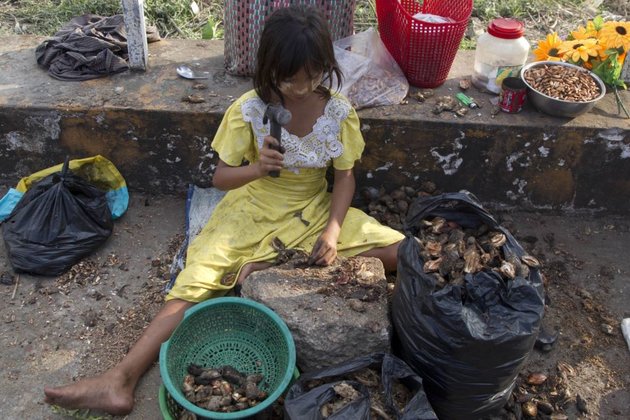How many are starving in #Asia? According to a new UN report the number has reached 486 MILLION people
Despite rapid economic growth, the Asia-Pacific region has nearly a half billion people who still go hungry.
And progress has stalled in improving food security and basic living conditions, a United Nations report said.
Even in affluent cities like Bangkok and Kuala Lumpur, poor families cannot afford enough good food for their children.
And often with devastating long-term consequences for their health and future productivity, says the report.
In Bangkok, more than a third of children were not receiving an adequate diet as of 2018, the report said.
In Pakistan only 4 percent of children were getting a “minimally acceptable diet,” it said.
‘To be able to meet a goal of reaching zero hunger in the region by 2030, 110,000 people must be lifted out of malnutrition.’
“After all those years of gains in fighting malnutrition in Asia we now find ourselves at a virtual standstill,” she said.
“We have to pick up the pace.”
More malnourished
Meanwhile, the number of malnourished people in the region has begun to rise, especially in East and SE Asia.
There has been almost no improvement in the past several years.
In the longer term, rates of malnutrition did fall from nearly 18 percent in 2005 to 11 percent in 2017.
However, hunger-related stunting that causes permanent impairment is worsening because of food insecurity.
There is also a lack of adequate sanitation, with 79 million children younger than 5 across the region affected.
The high risks also are reflected in the prevalence in wasting among very young children.
Including dangerous rapid weight loss related to illness or a lack of food.
The condition is seen most often in India and other parts of South Asia. However, it is also found in Indonesia, Malaysia and Cambodia.
1 in 10 children in Southeast Asia and 15 percent of children in South Asia are affected.
“The prevalence of wasting is above the threshold of public health concern in 3 of every 4 countries in the region,” it said.
Even overweight children often are malnourished if their families rely on inexpensive street foods that are sometimes unsafe.
Clean water, sanitation
The report focused on two main factors that often contributed to food insecurity.
Including climate-related disasters and inadequate access to clear water and sanitation.
Its authors said that providing adequate clean drinking water and sanitation were crucial.
The only way to prevent illnesses that further undermine health. Especially among children.
It also lauded efforts in some countries to ensure city dwellers have access to fresh food markets.
In Indonesia a study found that the prevalence of stunting correlated very closely with access to improved latrines.
Children relied on untreated water and no toilets were more than thrice as likely to be stunted.
While access to drinking water is widespread it has stopped improving and actually decreased in cities.
Many poor living in Southeast Asia rely on bottled water that claims to be suitable for drinking. However, often is contaminated.
A study of samples in Cambodia found 80 percent of water contained bacteria. Nearly all had contamination.
Ending the practice of open defecation, seen most widely in India.
In 2014, the country launched a campaign to end the practice by 2019. The goal is to increase latrines to 65 percent.
In the cities, progress has been faster.
–
You can follow BangkokJack on Instagram, Twitter & Reddit. Or join the free mailing list (top right)
Please help us continue to bring the REAL NEWS – PayPal










































